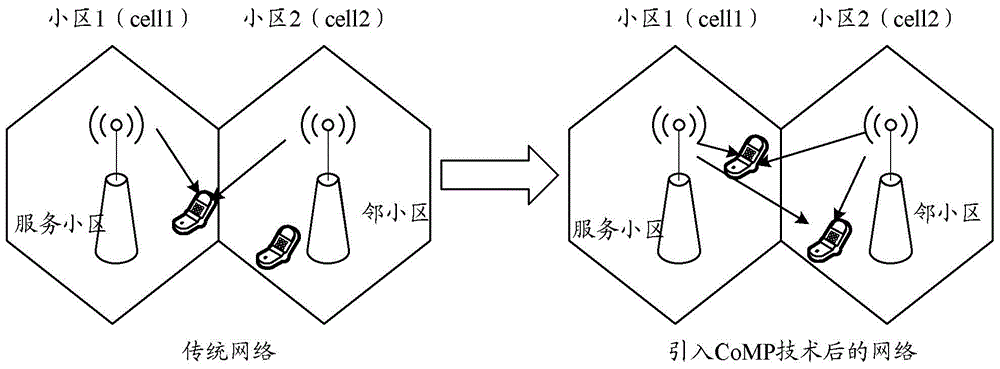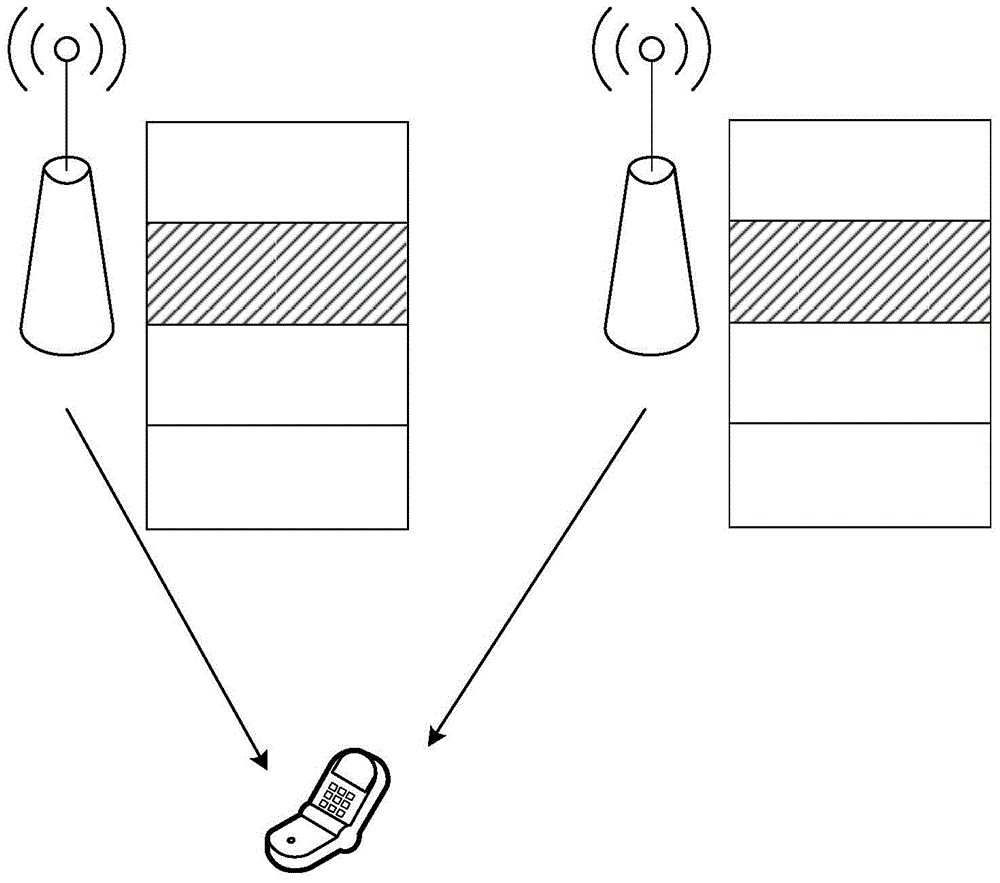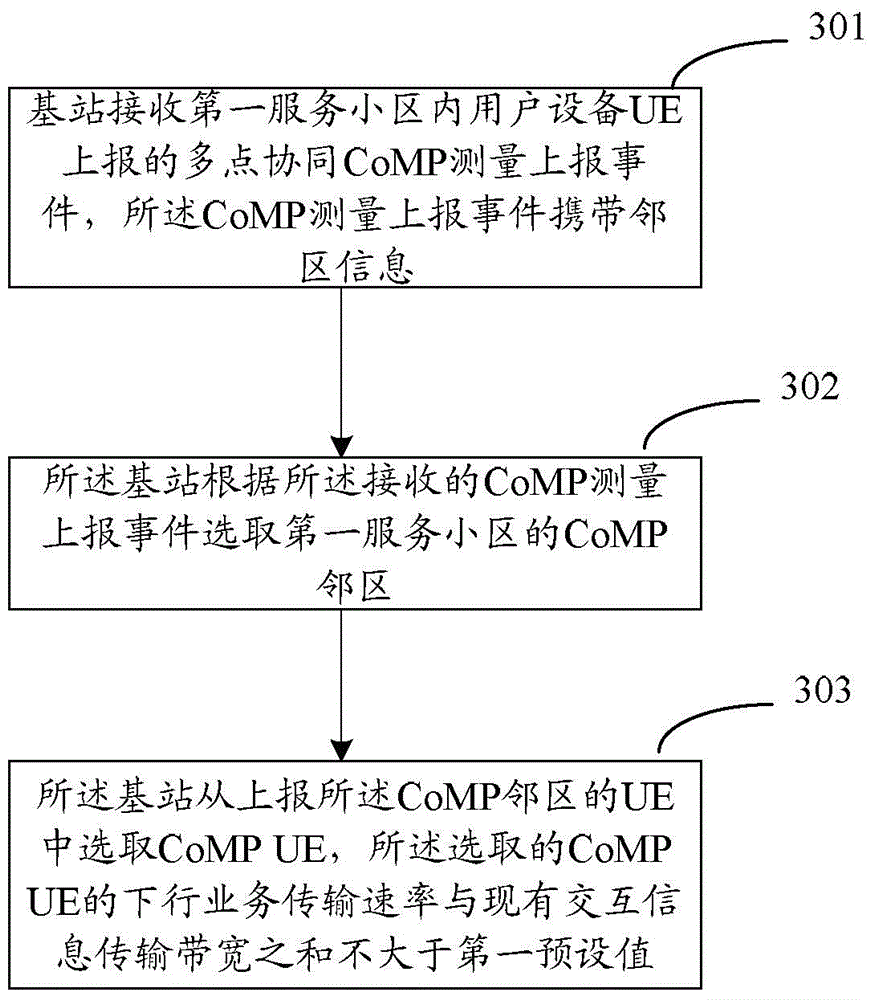Method, system and related apparatus for controlling downlink JT
A technology of joint transmission and control methods, applied in electrical components, wireless communication and other directions, can solve the problems of limited system transmission resources and reduced downlink service transmission rate, so as to solve the problem of limited interactive information transmission bandwidth and ensure the downlink services of other systems. The effect of transfer rate
- Summary
- Abstract
- Description
- Claims
- Application Information
AI Technical Summary
Problems solved by technology
Method used
Image
Examples
specific Embodiment 1
[0093] Figure 5 It is a schematic diagram of the downlink joint transmission control flow described in Embodiment 1 of the present invention, as shown in Figure 5 As shown, the process includes:
[0094] Step 501: In a certain TTI, the serving cell receives CoMP measurement reporting events reported by multiple UEs.
[0095] Step 502: The serving cell selects a CoMP neighbor celli according to the strongest neighbor cell selection principle.
[0096] Step 503: The serving cell selects a CoMPUE from all UEs reporting celli.
[0097] 504: After the CoMPUE is selected, determine whether the existing interaction information transmission bandwidth is less than bMbps, if yes, return to step 502; otherwise, perform step 505.
[0098] Step 505: The CoMP user selection within the TTI is completed, and the serving cell and each neighboring cell in the coordination set perform joint downlink transmission.
[0099] In this embodiment, the operations performed by the serving cell are...
specific Embodiment 2
[0100] Figure 6 It is a schematic diagram of the downlink joint transmission control flow described in Embodiment 2 of the present invention, as shown in Figure 5 As shown, the process includes:
[0101] Step 601: When a CoMP user is selected for the first time in each TTI, the serving cell clears the existing exchange information transmission bandwidth value.
[0102] Step 602: Judging whether there are multiple UEs reporting the neighboring cell for the selected strongest neighboring cell, if yes, execute step 603; otherwise, execute step 606.
[0103] Step 603: Determine whether the sum of the downlink service rates of these UEs plus the existing interaction information transmission bandwidth is less than bMbps, if yes, perform step 604; otherwise, perform step 605.
[0104] Step 604: Select these UEs as downlink JTCoMP UEs, add the celli to the cooperating set, add these UEs to the CoMP user set, and go to step 609.
[0105] Step 605: Delete the user with the highest ...
PUM
 Login to View More
Login to View More Abstract
Description
Claims
Application Information
 Login to View More
Login to View More - R&D
- Intellectual Property
- Life Sciences
- Materials
- Tech Scout
- Unparalleled Data Quality
- Higher Quality Content
- 60% Fewer Hallucinations
Browse by: Latest US Patents, China's latest patents, Technical Efficacy Thesaurus, Application Domain, Technology Topic, Popular Technical Reports.
© 2025 PatSnap. All rights reserved.Legal|Privacy policy|Modern Slavery Act Transparency Statement|Sitemap|About US| Contact US: help@patsnap.com



